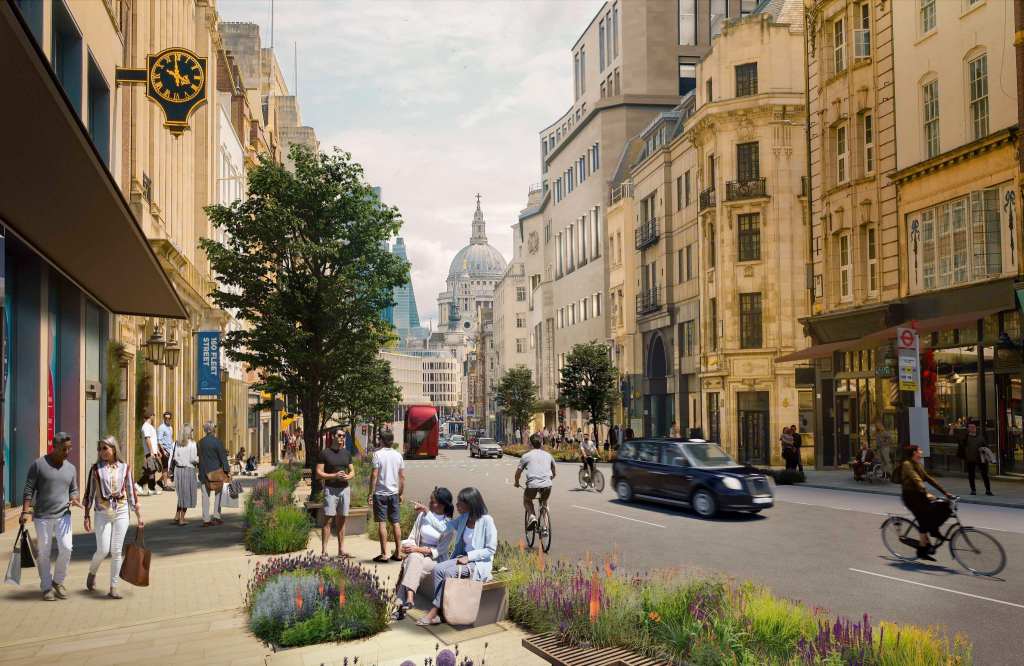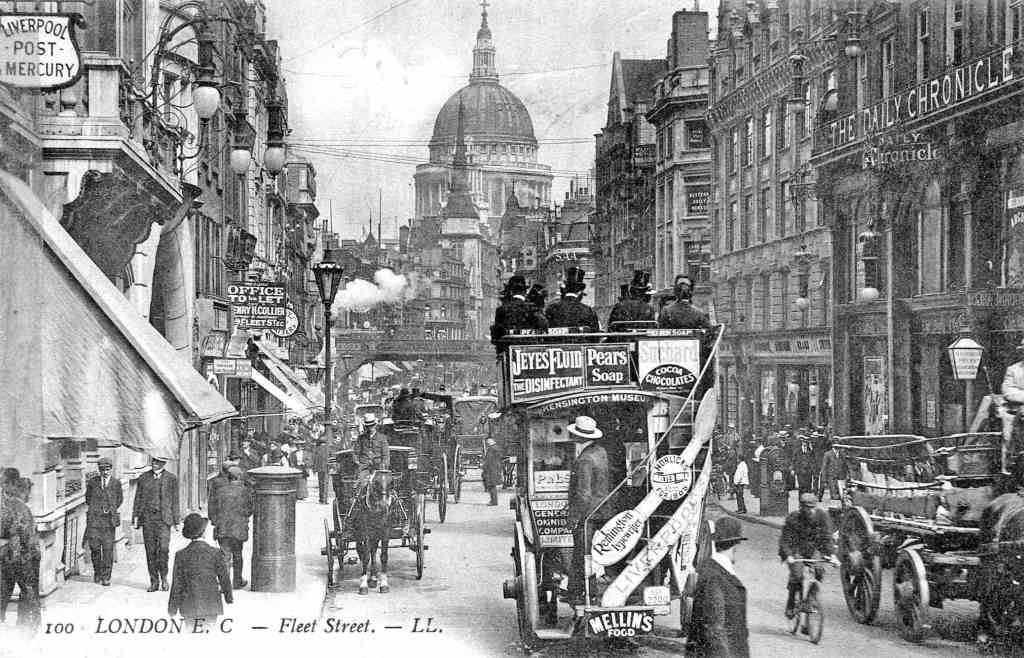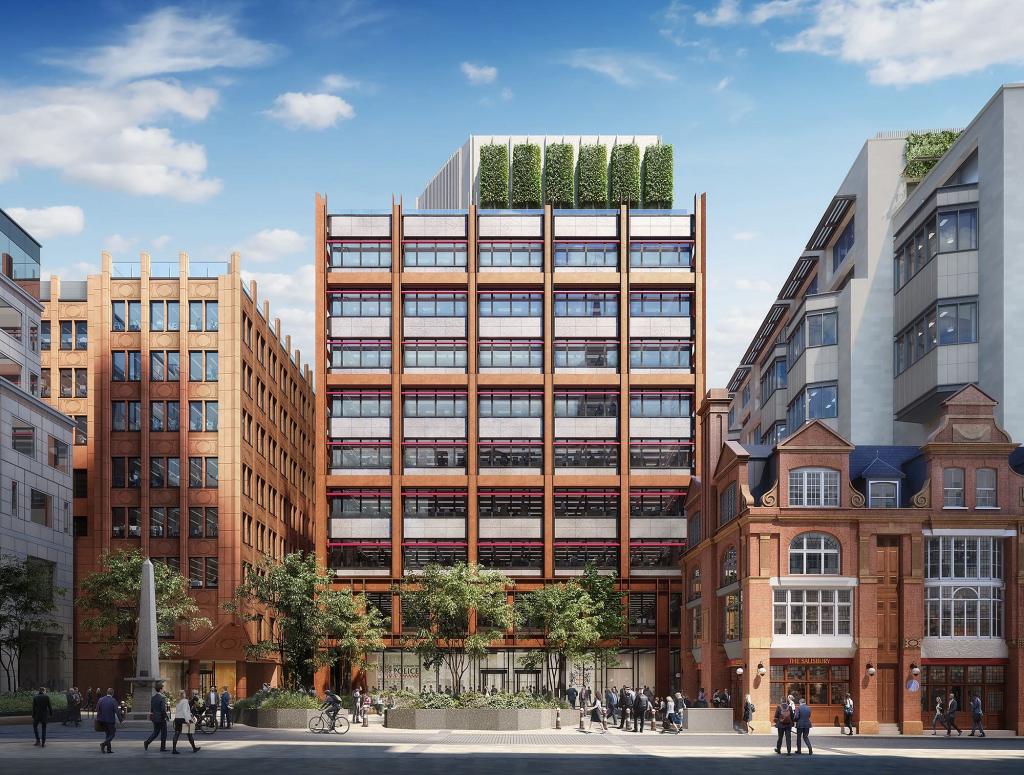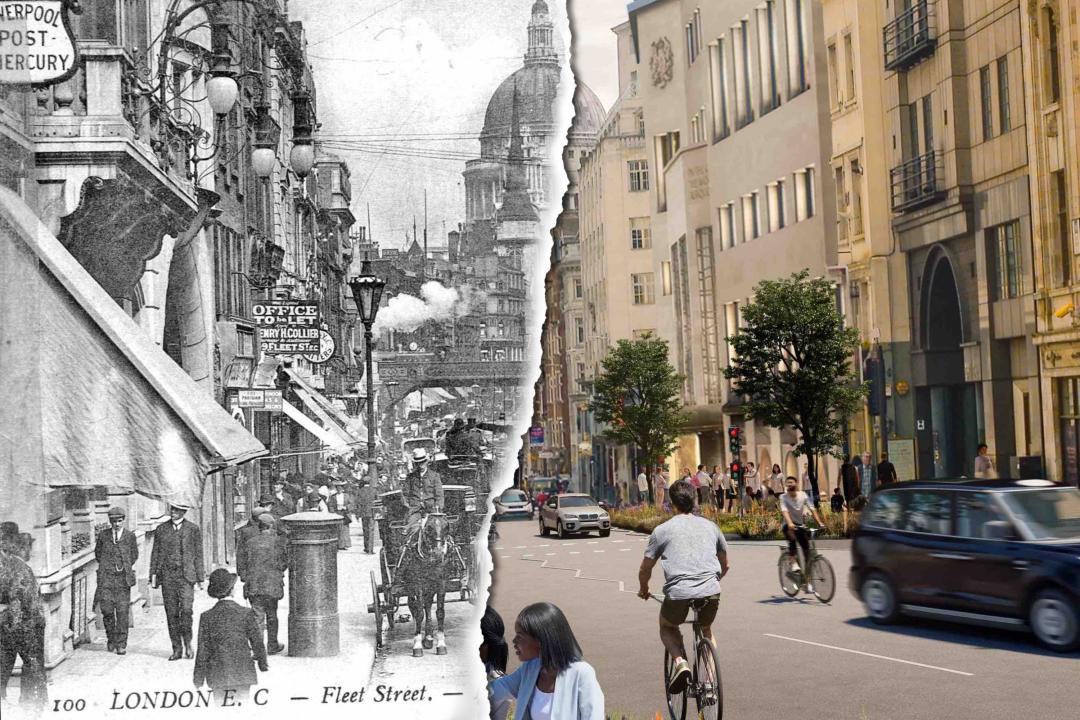Filthy, foetid and fraught with danger. A magnet for hooligans, hard drinkers, a few saints and plenty of sinners. And that was Fleet Street before the newspapers moved in.
This ancient thoroughfare, in use since Roman times, is one of London’s most famous occupational streets, much as Jermyn Street is known for its tailors and Harley Street its medics. The difference is that Fleet Street is inexorably linked to newspapers despite the fact journalists have not pounded its pavements for decades, the trade having moved on to Wapping and beyond at the tail end of the last century.
Now Fleet Street is on the cusp of another new era, with plans to replace many of its historic buildings with modern office blocks. According to the Fleet Street Quarter Business Improvement District – an organisation set up to promote Fleet Street and its surrounds as a modern business destination – there are some 34 major new projects on their way in the area, the result of a circa £5 billion investment which will create three million sq ft of office and commercial space. The group has also drawn up its own £80 million plans to improve the environment with widened streets, more cycle paths, benches and landscaping. ‘Fleet Street has been reinventing itself for 2,000 years,’ says Lady Lucy French, CEO of the Fleet Street Quarter. ‘It is evolving and it is very exciting to see what is coming through.’
Some may question whether so much new office space is really necessary when the Office for National Statistics reports that just over a third of Londoners still work from home all or some of the time, though. Others – such as Save Britain’s Heritage and Historic England – oppose the loss of buildings which reek of so much history and their replacement with snazzy and eco-friendly but soulless alternatives. And to this journalist-of-a-certain-age, all of this feels like the sad end of an era.
Running west from Temple Bar to Ludgate Circus, Fleet Street has been a route into and out of the City since Roman times. Its early history was positively pious in comparison with what came later because in the Middle Ages many senior clergymen had their lavish palaces on Fleet Street and several churches were built. The round Temple Church, with its collection of stone tomb effigies, and St Bride’s, redesigned by Sir Christopher Wren, survive to this day.

The River Fleet, a tributary of the Thames, ran overground in those days and by the 14th century the street was known for the tanning of animal hides, a messy and noxious trade requiring plentiful water. Booze was also plentiful, since by then Fleet Street possessed a lively collection of taverns and brothels. To celebrate the marriage of Anne Boleyn and Henry VIII in 1533, a water channel which ran down Fleet Street was filled with wine.
Fleet Street survived the Great Fire of London, although it lost many of its original timber-framed buildings, and in the 18th century it faced another threat – the Mohocks, a gang of aristocratic young thugs who attacked passers-by and vandalised buildings just for the hell of it. In the great tradition of British journalism, not all of the tales told about Fleet Street can be verified – including the anecdote of Geoffrey Chaucer being fined by magistrates for attacking a friar on Fleet Street, or the story murderous barber Sweeney Todd living and working there during the 18th century, killing off customers and serving up their remains baked into pies.

Fleet Street’s links to the newspaper trade really began in March 1702 when the Daily Courant – a newsletter which, thanks to high paper duties, ran to only a single page – was launched. Once those duties, and other taxes on newspapers, were repealed, the dissemination of news became a profitable business. It was a great time to be a proprietor. Newspapers had no competition from TV or the internet, and people cared what was going on in the world and on their doorsteps. Newspapers also enjoyed widespread public trust.
To celebrate the marriage of Anne Boleyn and Henry VIII in 1533, a water channel which ran down Fleet Street was filled with wine
By the 20th century Fleet Street was home to the Daily Express, the Daily Telegraph, the Times, the Sun and the Daily Chronicle, among others, as well as news agencies Reuters and Associated Press. Their writers, sub-editors, gossip columnists and photographers were well served by pubs – including the Grade II listed trio of Ye Olde Cheshire Cheese, the Punch Tavern and The Tipperary. The other option for the parched was – and is – El Vino, a wine bar which opened in 1923 and which inspired the fictional Pomeroy’s in Rumpole of the Bailey. Women were not served at its bar until 1982, when two female journalists went to court and successfully argued that the case was a violation of the Sex Discrimination Act.
Alas, Fleet Street’s reign as the heartland of British journalism lasted only until the mid-1980s when Rupert Murdoch, owner of News International, decided Wapping would be a more economical venue for his papers. After a year of strikes and protests, Murdoch prevailed, and other newspapers followed. Today Fleet Street is full of lawyers, accountants and recruitment consultants.
The current plans for the street include building a 21-storey tower on the site of the former Daily Telegraph offices. The Grade II* listed Daily Express building next door will become a ‘new retail and cultural destination’ with a rooftop pocket park. Just up the road the art deco former Agence France-Presse building, Chronicle House, was demolished in 2022 to make way for a £170 million ‘Justice Quarter’ with a new headquarters for the City of London Police and a new court, both due to be completed this year.

While the facades of the Express and Telegraph buildings will be preserved, the demise of Chronicle House horrified both Historic England and Save Britain’s Heritage. Marcus Binney of Save Britain’s Heritage described the new building as a ‘monstrous blot on one of the finest and most famous thoroughfares in London… their windowless facades step straight out of George Orwell’s Nineteen Eighty-Four and the Stasi’.
Late last year the City granted planning permission for yet another major development, this time an 865-room block of student flats at 65 Fleet Street, formerly home to a law firm, and including the part demolition of The Tipperary, thought to be London’s first Irish pub.
Possibly it is nothing more than a case of belated nostalgia, but journalists like me will mourn this very modern reinvention of Fleet Street. To this day contemporaries describe a job at a national paper as ‘working on Fleet Street’, even though your actual office will more likely be in Victoria or east London (or possibly your own kitchen table).
But times change, and Lady Lucy French describes the transformation as a chance to resurrect Fleet Street and keep it relevant in the 21st century and beyond. And when I asked a younger hack – one who had not been raised on tall stories of epic liquid lunches, backstabbing rival executives and scoops won and lost – whether she thought the restyling of the Street of Shame was, well, a shame, her response was simply a shrug and an ‘OK boomer’.








Comments